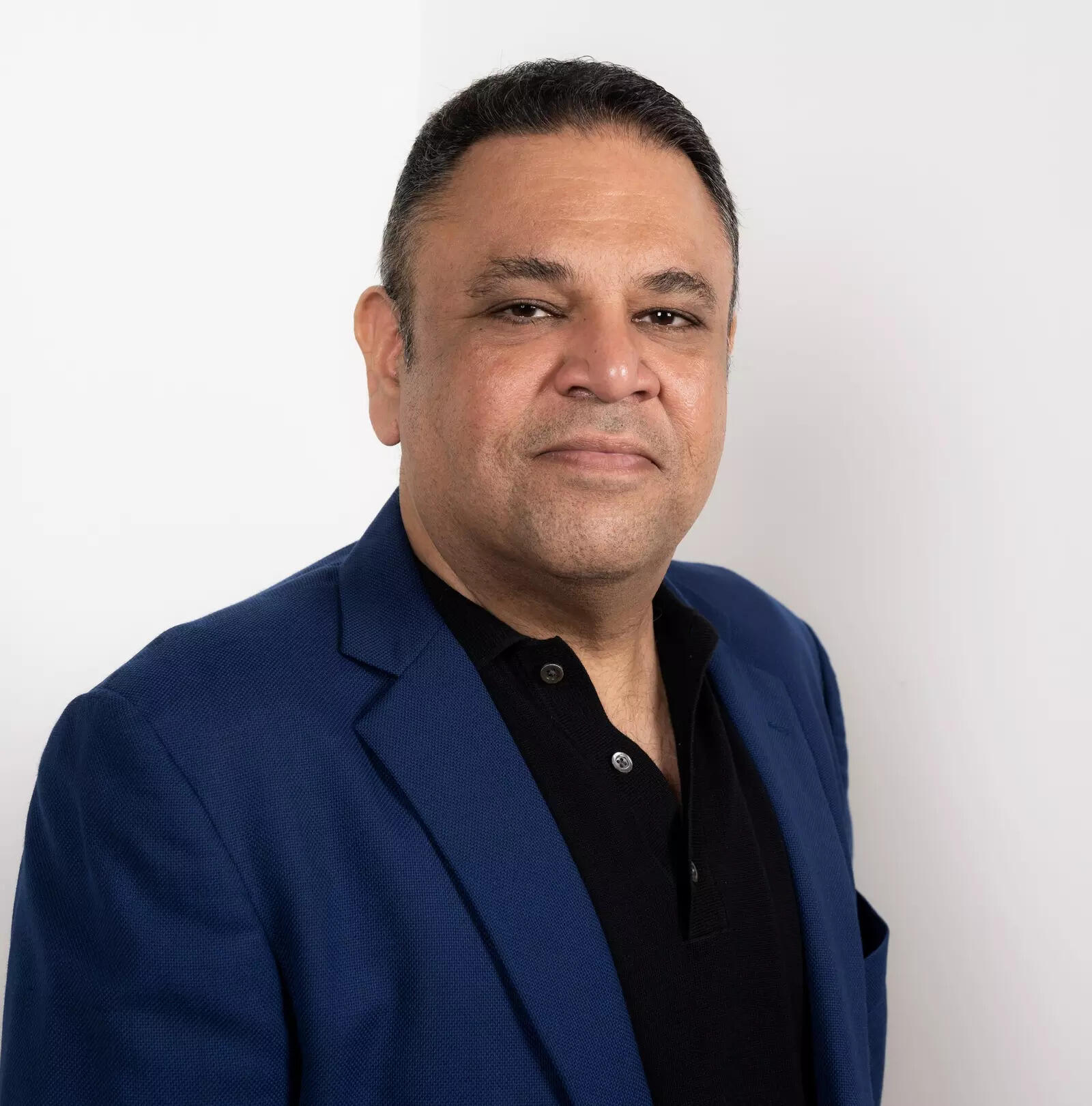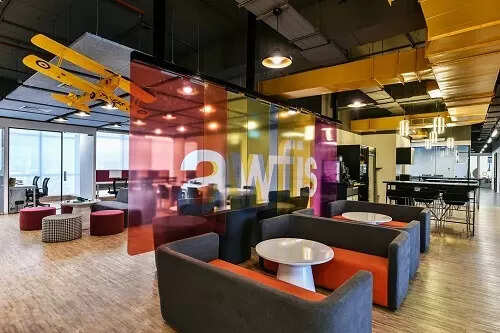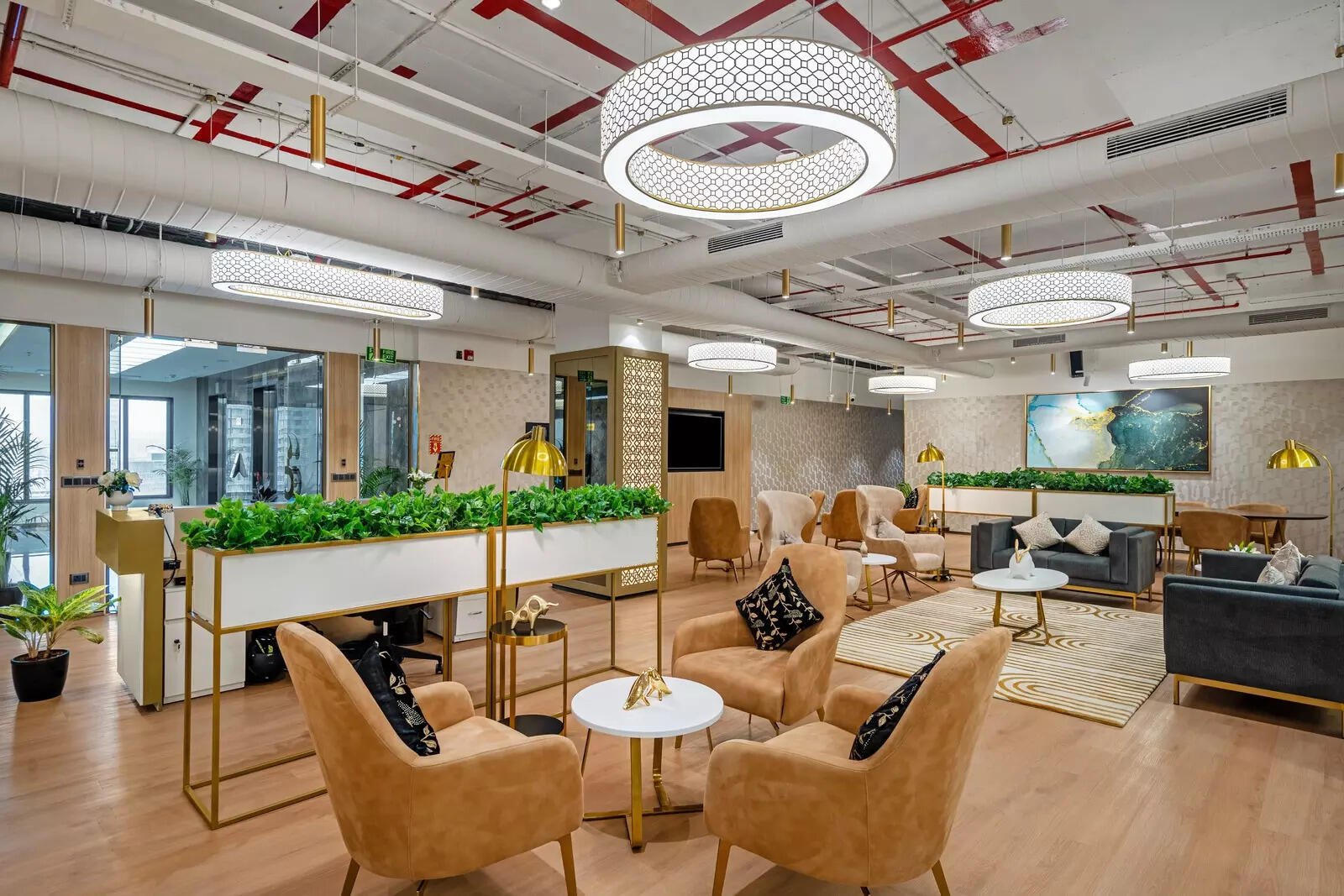
NEW DELHI: Awfis Space Solutions is poised for robust growth in FY26 with a target of 30% year-on-year revenue increase, aiming to cross ₹1,600 crore. The company expects to add approximately 40,000 new coworking seats in around 70 centers across India, following its signature medium-sized center strategy averaging 30,000 sq ft each.
Rent for their flagship standard product ranges from ₹8,000 to ₹20,000 per seat per month depending on location and product tier.
Awfis continues to maintain an enviable EBITDA margin guidance of 14%, supported by a strong return on capital employed (RoCE) of nearly 67%. The company operates a nearly net-cash position with minimal debt and plans to diversify its revenue mix by growing its non-core business lines like design & build, IT services, furniture, and cafeteria management, aiming for 40% contribution from these ancillary services in the coming five years.
In a wide-ranging conversation with ETRealty, Amit Ramani, chairman & managing director of the company discusses growth guidance, profitability, centre strategy, occupancies, churn, pricing, risk mitigation, the recent FM divestment, and expansion beyond metros. Edited excerpts:
How did Q1 FY26 shape up and what does H1 look like?
We closed the first quarter of FY26 with revenue of about ₹335 crore and EBITDA of Rs 127 crore, roughly seven percentage points higher quarter-on-quarter. Year-on-year growth crossed 40%. The momentum from Q1 has continued into the second quarter. We had guided for 30% growth on ₹1,210 crore revenue and about 14% EBITDA margin for FY26, and we are well on track. PAT in Q1 was ₹25 crore, and we expect this momentum to sustain through the year.
How many centres are live now and what’s the near-term expansion plan?
We currently operate 232 live centers and, counting those under fit-outs or LOIs, the figure exceeds 260. Last year, we added about 40,000 seats through nearly 70 new centers. The target for FY26 is similar, another 40,000 seats, translating to roughly 70–75 additional centers.
Some operators prefer very large plates; others stick to smaller formats. What’s Awfis’ format strategy?
Our sweet spot is 30,000 sq ft per centre. We may take multiple floors in phases in the same building; operationally they’re separate centres with separate P&Ls. This size helps us build network density, for example, ~35 centres in Mumbai, so we can serve every established micro-market.

We also scale via managed aggregation (our landlord-partnered model): the landlord invests ~70–80% of capex; once profitable, we share upside. Size matters here—raising ₹4–5 crore on a 30,000 sq ft centre is a more practical conversation than ₹30+ crore on a 100,000 sq ft single plate.
We will selectively do larger bets in established micro-markets, e.g., ~85,000 sq ft in Aerocity (with Prestige) going live around March, and ~1.2 lakh sq ft in BKC with Prestige. These are exceptions, not the rule.
Public markets often prefer “fewer, larger centres” over many smaller ones. How do you address the concentration-risk argument?
At our scale, diversification wins. No single centre contributes more than ~1% of revenue. If external works (say, metro construction) impact a micro-market, our spread across ~70 centres absorbs that shock better than a five-centre, mega-plate strategy.
We went public answering tough questions about the flex model. Today, demand is strong, and our network density is a competitive moat, you can’t serve mobility, day-passes, and micro-market proximity without it.
Has being a listed entity changed growth or investor pressures?
Not really. Investors understand our diversification mitigates risk. A 40,000-seat addition translates to around 2.2 million sq ft annually. No single center contributes over 1% of our revenue. Concentration risk is minimal, which appeals to long-term investors more than scale alone.
How are you balancing growth with profitability?
Our FY26 RoCE is around 67%, among the highest in India. We aim to sustain 25–30% annual revenue growth with double-digit EBITDA margins. Adding 100,000 seats is possible but not desirable if occupancy or profitability is compromised. We’ll continue adding ~40,000 seats per year to maintain balance.
How have your workspace products evolved?
Currently, 90% of our portfolio is the flagship line, 10% is Gold and Elite. Over time, we plan an 85–15 mix. For example, our centers on Gurgaon’s Golf Course Extension Road range from ₹8,000 to ₹20,000 per seat per month across variants.
What’s the revenue mix between coworking and managed spaces?
About 70% of our portfolio is coworking, 30–40% speculative supply and 70% customized for clients taking 25+ seats for over a year. Managed offices represent around 30% of total revenue. Nearly 67% of our footprint follows the managed aggregation model, making us asset-light and high-ROCE.
How has client composition evolved?
Around 65% of our clients are large corporates, 25% are mid-size firms or SMEs, and 10% are startups and freelancers. Post-pandemic, large corporates now prefer distributed hubs, even 20 or 50-seater centers, to support hybrid work.
What’s your presence in tier-II and smaller cities?
About 89% of our portfolio lies in tier-I cities and 11% in tier-II. tier-III remains unviable due to compliance and supply gaps. Cities like Jaipur, Indore, Lucknow, and Coimbatore are performing strongly.
What’s your current occupancy and churn level?
Portfolio occupancy is 73% overall and 84% for centers older than 12 months. Churn remains between 1–1.2% per month, or roughly 13% annually, which is healthy for the flex segment.
Some analysts cited high revenue growth alongside rising debt. How do you respond?
We’re nearly debt-free, just ₹20 crore of debt against ₹1,200 crore revenue and over ₹100 crore in cash. So, we’re effectively in a positive net-cash position. Our management efficiency is high, and we’ve consistently beaten our EBITDA guidance.
Despite consistent results, your share price has fluctuated. Is that a concern?
We don’t manage the stock; we manage the business. We listed at ₹383 (opened ~₹415), peaked around ₹942 within three months, and today sit meaningfully above issue with a market cap ~₹4,100–4,200 crore. If we keep delivering cash flows, ROCE and profitability, the market will reflect that over time.
You recently divested the facility management vertical. Why?
That business began during COVID to protect jobs when vendors exited. We scaled it to 3,200 employees but decided to exit after listing due to compliance complexity. We sold it to SMS (backed by Samara Capital) for about ₹26 crore, which was reinvested in our core operations.
Awfis has expanded beyond coworking. How significant are new verticals like design, furniture, and IT services?
Very significant. Design & Build generated ₹258 crore of FY25 revenue, growing 20% annually. This year, we expect over ₹300 crore. Our in-house design team exceeds 100 professionals across India, the US, and Manila. We’ve also launched a modular furniture line, an IT services arm (Awfis Tech Labs), transportation in partnership with ECOS Mobility, and cafeteria management for third-party clients. Each of these is capital-light, service-linked, and high-ROCE.
How do you foresee revenue mix shifting over five years?
Currently, 75% of revenue comes from coworking and managed offices, and 25% from ancillary lines. Over five years, we expect a 60-40 split, with the 40% coming entirely from services like design, furniture, tech, and food, all high-margin, asset-light businesses.
How does Awfis ensure risk mitigation when occupancy fluctuates?
We mitigate risk by choosing 30,000-sq-ft centers, spreading demand geographically, maintaining a large in-house sales team (80+ members), and following a 97-point due diligence checklist for new centers. I personally review every potential site before sign-off. This ensures none of our centers operate below minimum guarantee levels.
How frequently do you shut underperforming centers?
A handful yearly, usually 2–3 closures, primarily due to product evolution or small size. Centers below 20,000–30,000 sq ft, such as our former Lower Parel or Nelson Mandela Marg sites, have been phased out in favor of larger, standardized formats.
What’s your annual capital expenditure?
We invest around ₹200 crore yearly in co-working expansion. For new verticals like furniture, design, or IT services, capex is minimal, typically under ₹7 crore annually, as these operate on variable, project-driven manpower costs.
What’s your competition and market share in the flex market?
We control about 11–12% of India’s flex office supply. Our network spans 19 cities, five times larger than our nearest competitor. Being diversified across coworking, managed offices, design, and furniture makes us the only consistently profitable coworking company globally.
What rent escalation structure do you follow with landlords and clients?
Typically, we sign nine-year leases with a three- to five-year lock-in. Landlords see 15% escalation every three years, while client rentals increase 5-7% annually. Escalations are healthy as demand in micro-markets like BKC, Cyber City, and Aerocity has nearly doubled over the past year.
What are your client lock-in and tenure averages?
The average client lock-in is around 24 months, and average tenure is 33 months overall, rising to 44 months for cohorts above 100 seats. This showcases strong stickiness among enterprise clients.












